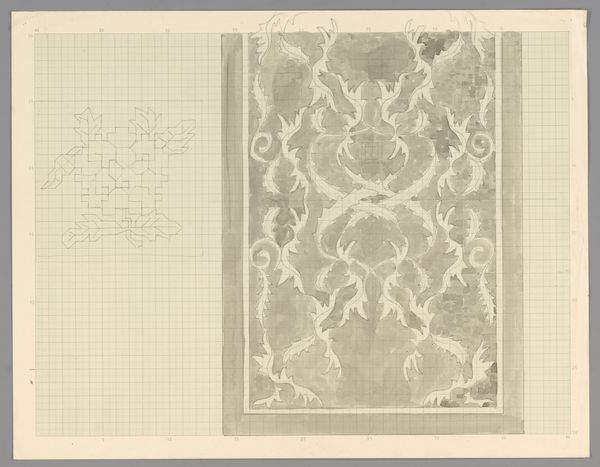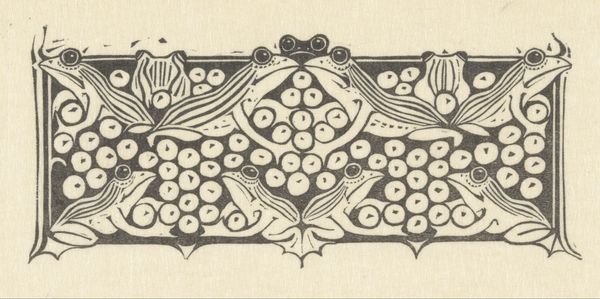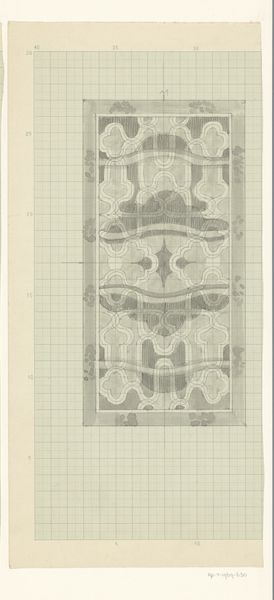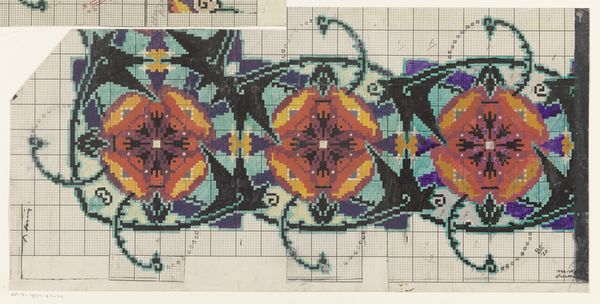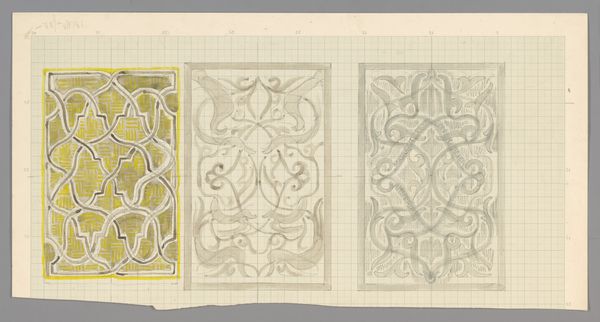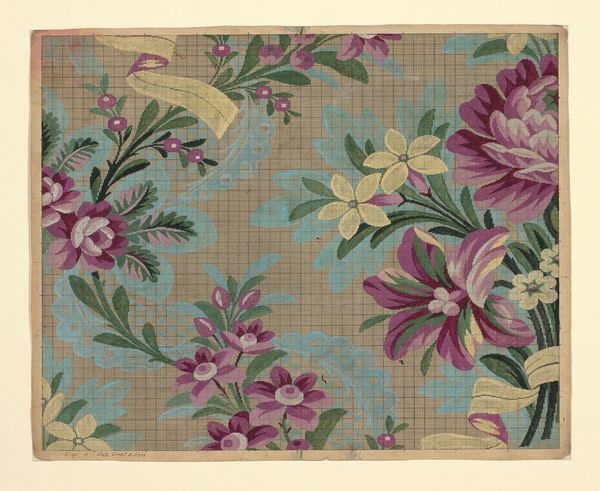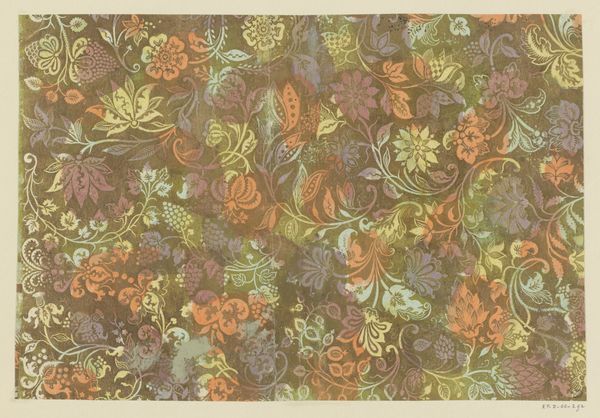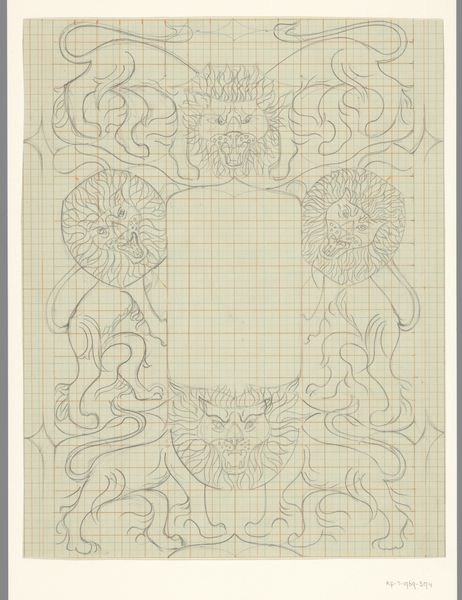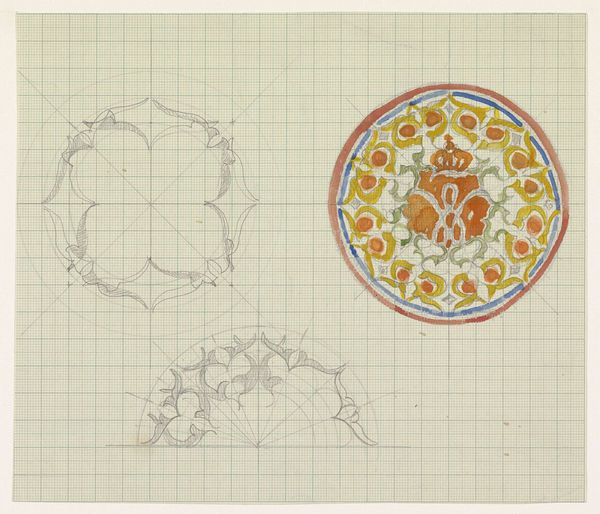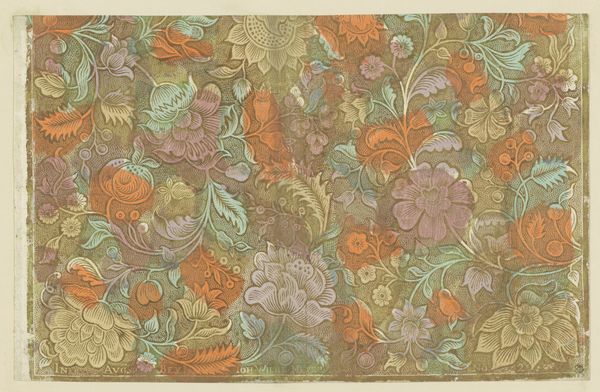
drawing, textile, paper
#
drawing
#
arts-&-crafts-movement
#
textile
#
paper
#
geometric
#
decorative-art
Dimensions: height 268 mm, width 518 mm
Copyright: Rijks Museum: Open Domain
Curator: Before us is “Ontwerp voor een tapijt in Het Uiltje,” a carpet design attributed to Theo Nieuwenhuis, dating from 1876 to 1951. It is currently housed here at the Rijksmuseum. Editor: My first impression is the rigid grid underlying the organic forms. It's fascinating how the pixelated nature of the design, born from its very conception, contrasts so playfully with the fluidity it intends to depict. Curator: Exactly. It is a drawing on paper, intended as a textile design, showcasing a wonderful blend of drawing and decorative art that fits squarely within the Arts and Crafts movement, and therefore cannot be divorced from the labor needed to execute it. Each tiny square represents a stitch, hours of work, transforming an idea into tangible form, speaking to the values placed on craftsmanship. Editor: Yes, but focusing purely on the intrinsic qualities of the work, there's a compelling visual dialogue between the hard-edged geometry and the soft floral and foliate forms. The restricted palette and overall composition achieve balance while hinting at subtle asymmetry that teases the eye, challenging our perceptions with visual wit and structural sophistication. Curator: It’s crucial to consider what those aesthetic decisions represent. The decorative elements signal a very specific social ideology - elevating the craft, rejecting mass production, aiming for beauty and utility in everyday life, thereby creating access to beauty for every member of society. Editor: I see your point about the broader context. Yet the way Nieuwenhuis has employed this cross-stitch structure evokes its own self-contained visual language that demands a close semiotic reading of its design elements. Curator: It is exciting to think about all the hands, maybe a whole community, it would have taken to produce this, each worker adding to the visual landscape Nieuwenhuis conceived. We have to recognize their participation and its importance in shaping the final creation. Editor: True, when we let both perspectives interact—material and formal—we can develop a rich, nuanced portrait of this intricate, delicate design. Curator: Precisely. Understanding the socio-economic underpinnings deepens our engagement. Editor: Yes, allowing a formal analysis sharpens our insight into the broader values that shape our interaction with "Ontwerp voor een tapijt in Het Uiltje.”
Comments
No comments
Be the first to comment and join the conversation on the ultimate creative platform.
